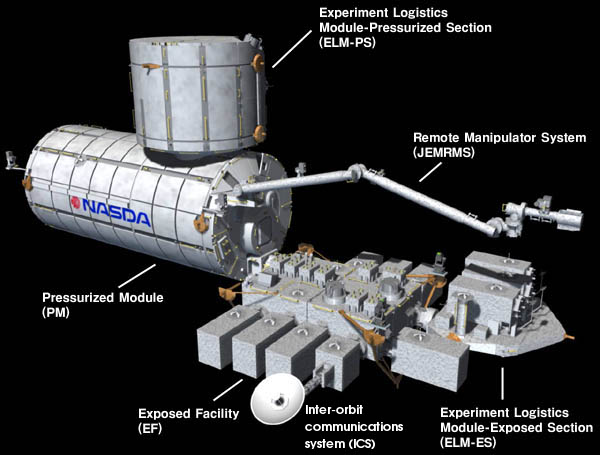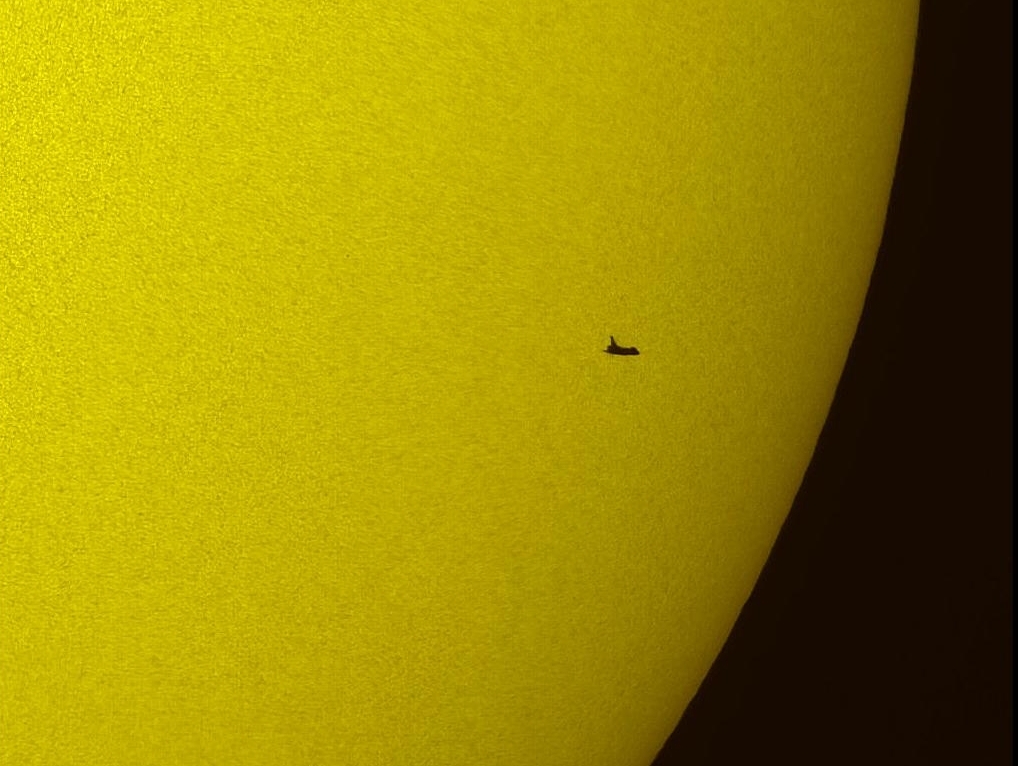|
Crew Equipment Interface Test
A crew equipment interface test (CEIT) was a training procedure that helped spaceflight crewmembers gain first-hand knowledge of the flight hardware used during a space shuttle mission. For International Space Station assembly tasks, NASA conducted CEIT activities in the Space Station Processing Facility at Kennedy Space Center (KSC). The last CEIT was conducted April 7–8, 2011 by the STS-135 crew involving the ''space shuttle Atlantis Space Shuttle ''Atlantis'' (Orbiter Vehicle designation: OV‑104) is a retired Space Shuttle orbiter vehicle which belongs to NASA, the spaceflight and space exploration agency of the United States. ''Atlantis'' was manufactured by the Rockw ...'' in preparation for the final flight of the shuttle program. References Human spaceflight Flight training {{space-stub ... [...More Info...] [...Related Items...] OR: [Wikipedia] [Google] [Baidu] |
Spaceflight
Spaceflight (or space flight) is an application of astronautics to fly objects, usually spacecraft, into or through outer space, either with or without humans on board. Most spaceflight is uncrewed and conducted mainly with spacecraft such as satellites in orbit around Earth, but also includes space probes for flights beyond Earth orbit. Such spaceflights operate either by telerobotic or autonomous control. The first spaceflights began in the 1950s with the launches of the Soviet Sputnik satellites and American Explorer and Vanguard missions. Human spaceflight programs include the Soyuz, Shenzhou, the past Apollo Moon landing and the Space Shuttle programs. Other current spaceflight are conducted to the International Space Station and to China's Tiangong Space Station. Spaceflights include the launches of Earth observation and telecommunications satellites, interplanetary missions, the rendezvouses and dockings with space stations, and crewed spaceflights on sci ... [...More Info...] [...Related Items...] OR: [Wikipedia] [Google] [Baidu] |
NASA
The National Aeronautics and Space Administration (NASA ) is an independent agencies of the United States government, independent agency of the federal government of the United States, US federal government responsible for the United States's civil list of government space agencies, space program, aeronautics research and outer space, space research. National Aeronautics and Space Act, Established in 1958, it succeeded the National Advisory Committee for Aeronautics (NACA) to give the American space development effort a distinct civilian orientation, emphasizing peaceful applications in space science. It has since led most of America's space exploration programs, including Project Mercury, Project Gemini, the 1968–1972 Apollo program missions, the Skylab space station, and the Space Shuttle. Currently, NASA supports the International Space Station (ISS) along with the Commercial Crew Program and oversees the development of the Orion (spacecraft), Orion spacecraft and the Sp ... [...More Info...] [...Related Items...] OR: [Wikipedia] [Google] [Baidu] |
International Space Station
The International Space Station (ISS) is a large space station that was Assembly of the International Space Station, assembled and is maintained in low Earth orbit by a collaboration of five space agencies and their contractors: NASA (United States), Roscosmos (Russia), European Space Agency, ESA (Europe), JAXA (Japan), and Canadian Space Agency, CSA (Canada). As the largest space station ever constructed, it primarily serves as a platform for conducting scientific experiments in microgravity and studying the space environment. The station is divided into two main sections: the Russian Orbital Segment (ROS), developed by Roscosmos, and the US Orbital Segment (USOS), built by NASA, ESA, JAXA, and CSA. A striking feature of the ISS is the Integrated Truss Structure, which connect the station’s vast system of solar panels and Spacecraft thermal control, radiators to its pressurized modules. These modules support diverse functions, including scientific research, crew habitation, ... [...More Info...] [...Related Items...] OR: [Wikipedia] [Google] [Baidu] |
Space Station Processing Facility
The Space Systems Processing Facility (SSPF), originally the Space Station Processing Facility, is a three-story industrial building at Kennedy Space Center for the Manufacturing of the International Space Station, manufacture and Process manufacturing, processing of flight hardware, modules, structural components and solar arrays of the International Space Station, and future space stations and commercial spacecraft. It was built in 1992 at the space complex's industrial area, just east of the Operations and Checkout Building. The SSPF includes two processing bays, an airlock, operational control rooms, laboratories, logistics areas for equipment and machines, office space, a ballroom and conference halls, and a cafeteria. The processing areas, airlock, and laboratories are designed to support non-hazardous Space Station and Space Shuttle payloads in Cleanroom, 100,000 class clean work areas. The building has a total floor area of . History and construction During the re-desig ... [...More Info...] [...Related Items...] OR: [Wikipedia] [Google] [Baidu] |
Kennedy Space Center
The John F. Kennedy Space Center (KSC, originally known as the NASA Launch Operations Center), located on Merritt Island, Florida, is one of the NASA, National Aeronautics and Space Administration's (NASA) ten NASA facilities#List of field centers, field centers. Since 1968, KSC has been NASA's primary launch center of American spaceflight, research, and technology. Launch operations for the Apollo Program, Apollo, Skylab and Space Shuttle Program, Space Shuttle programs were carried out from Kennedy Space Center Launch Complex 39 and managed by KSC. Located on the east coast of Florida, KSC is adjacent to Cape Canaveral Space Force Station (CCSFS). The management of the two entities work very closely together, share resources, and operate facilities on each other's property. Though the first Apollo flights and all Project Mercury and Project Gemini flights took off from the then-Cape Canaveral Air Force Station, the launches were managed by KSC and its previous organization, ... [...More Info...] [...Related Items...] OR: [Wikipedia] [Google] [Baidu] |
JAXA
The is the Japanese national air and space agency. Through the merger of three previously independent organizations, JAXA was formed on 1 October 2003. JAXA is responsible for research, technology development and launch of satellites into orbit, and is involved in many more advanced missions such as asteroid exploration and possible human exploration of the Moon. Its motto is ''One JAXA'' and its corporate slogan is ''Explore to Realize'' (formerly ''Reaching for the skies, exploring space''). History On 1 October 2003, three organizations were merged to form the new JAXA: Japan's Institute of Space and Astronautical Science (ISAS), the National Aerospace Laboratory of Japan (NAL), and National Space Development Agency of Japan (NASDA). JAXA was formed as an Independent Administrative Institution administered by the Ministry of Education, Culture, Sports, Science and Technology (MEXT) and the Ministry of Internal Affairs and Communications (MIC). Before the mer ... [...More Info...] [...Related Items...] OR: [Wikipedia] [Google] [Baidu] |
STS-135
STS-135 ( ISS assembly flight ULF7) was the 135th and final mission of the American Space Shuttle program. It used the orbiter '' Atlantis'' and hardware originally processed for the STS-335 contingency mission, which was not flown. STS-135 launched on July 8, 2011, and landed on July 21, 2011, following a one-day mission extension. The four-person crew was the smallest of any shuttle mission since STS-6 in April 1983. The mission's primary cargo was the Multi-Purpose Logistics Module (MPLM) '' Raffaello'' and a Lightweight Multi-Purpose Carrier (LMC), which were delivered to the International Space Station (ISS). The flight of ''Raffaello'' marked the only time that ''Atlantis'' carried an MPLM. Although the mission was authorized, it initially had no appropriation in the NASA budget, raising questions about whether the mission would fly. On January 20, 2011, program managers changed STS-335 to STS-135 on the flight manifest. This allowed for training and other mission spe ... [...More Info...] [...Related Items...] OR: [Wikipedia] [Google] [Baidu] |
Space Shuttle Atlantis
Space Shuttle ''Atlantis'' (Orbiter Vehicle designation: OV‑104) is a retired Space Shuttle orbiter vehicle which belongs to NASA, the spaceflight and space exploration agency of the United States. ''Atlantis'' was manufactured by the Rockwell International company in Southern California and was delivered to the Kennedy Space Center in Eastern Florida in April 1985. ''Atlantis'' is the fourth operational and the second-to-last Space Shuttle built. Its maiden flight was STS-51-J made from October 3 to 7, 1985. ''Atlantis'' embarked on its 33rd and final mission, also the final mission of a space shuttle, STS-135, on July 8, 2011. STS-134 by Space Shuttle Endeavour, ''Endeavour'' was expected to be the final flight before STS-135 was authorized in October 2010. STS-135 took advantage of the processing for the STS-335 Launch on Need mission that would have been necessary if STS-134's crew became stranded in orbit. ''Atlantis'' landed for the final time at the Kennedy Space Cent ... [...More Info...] [...Related Items...] OR: [Wikipedia] [Google] [Baidu] |
Human Spaceflight
Human spaceflight (also referred to as manned spaceflight or crewed spaceflight) is spaceflight with a crew or passengers aboard a spacecraft, often with the spacecraft being operated directly by the onboard human crew. Spacecraft can also be telerobotic, remotely operated from ground stations on Earth, or Autonomous robot, autonomously, without any direct human involvement. People trained for spaceflight are called astronauts (American or other), ''cosmonauts'' (Russian), or ''taikonauts'' (Chinese); and non-professionals are referred to as spaceflight participants or ''spacefarers''. The first human in space was Soviet Union, Soviet cosmonaut Yuri Gagarin, who launched as part of the Soviet Union's Vostok program on Cosmonautics Day, 12 April 1961 at the beginning of the Space Race. On 5 May 1961, Alan Shepard became the first American in space, as part of Project Mercury. Humans traveled to the Moon nine times between 1968 and 1972 as part of the United States' Apollo progr ... [...More Info...] [...Related Items...] OR: [Wikipedia] [Google] [Baidu] |







